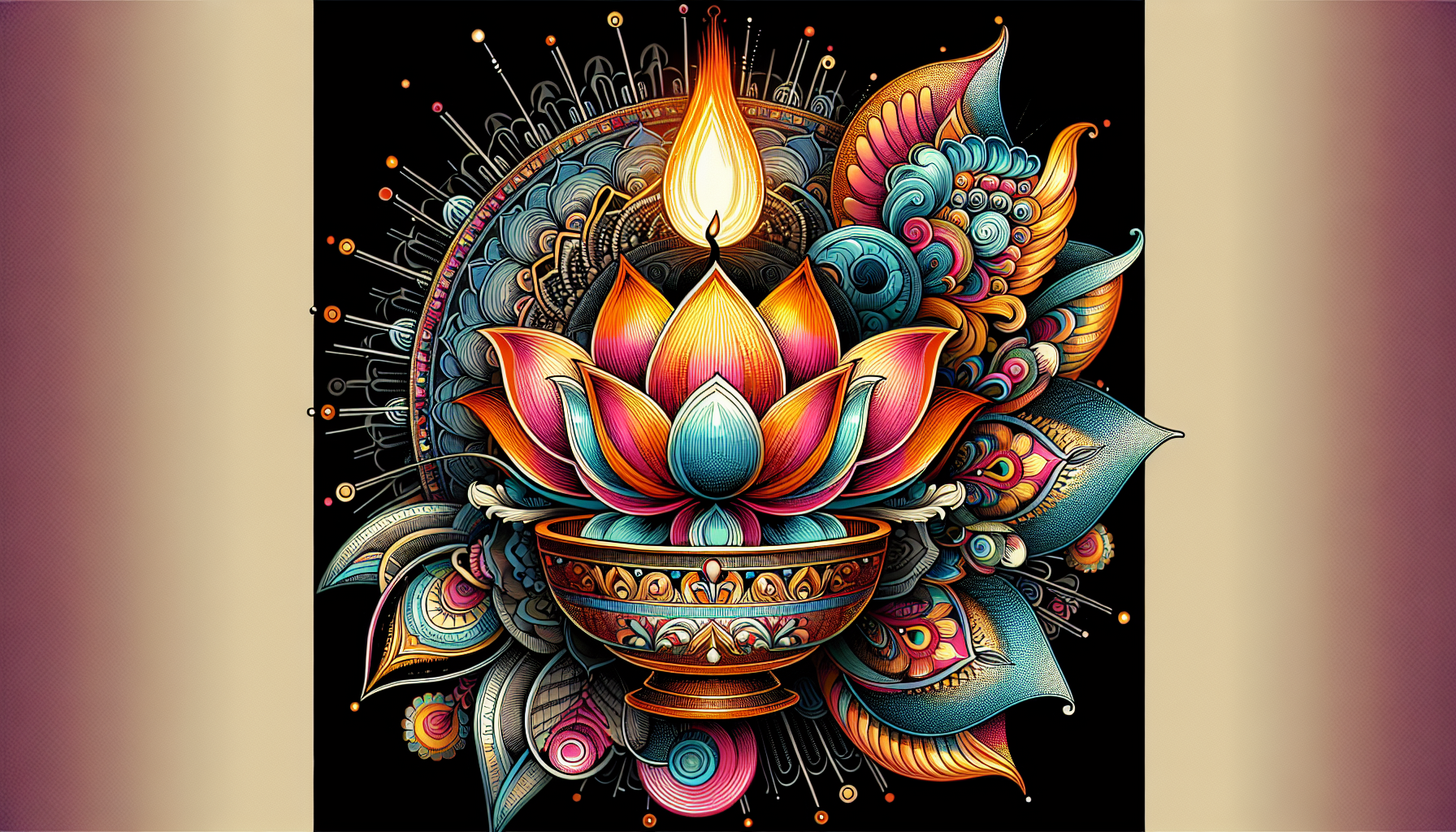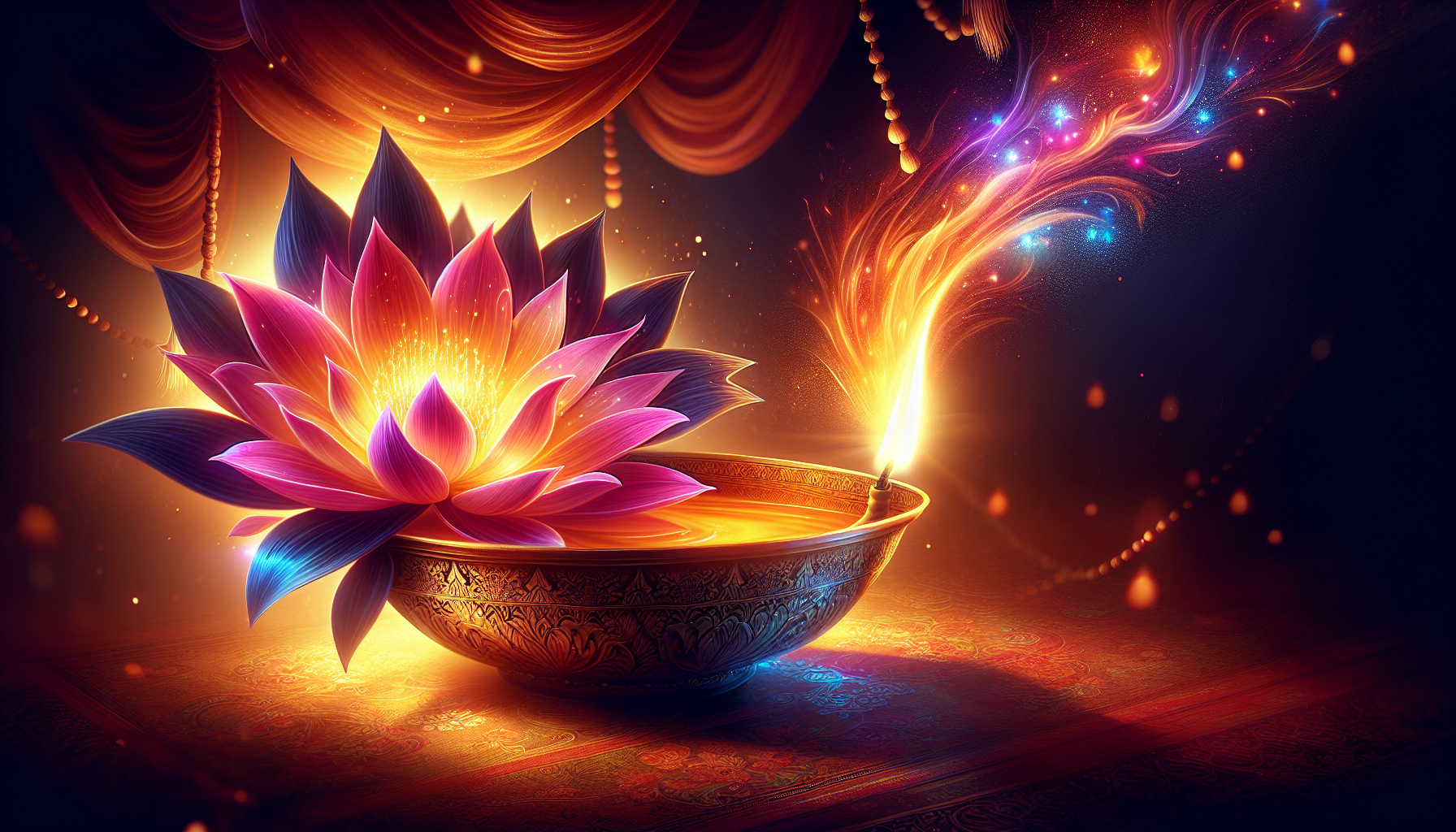In Hinduism, there exists a deep reverence for the sacred, and understanding what is considered sacred is key to comprehending the essence of this ancient religion. From majestic temples adorned with intricate carvings to ancient scriptures that hold timeless wisdom, the sacred things in Hinduism encompass a wide array of objects, rituals, and beliefs that are held in profound esteem. Embark on a journey through this enchanting spiritual tradition as we explore the sacred items that hold significance and inspire devotion for millions of people across the globe. Hinduism is a rich and diverse religion that encompasses a wide range of beliefs, practices, and traditions. From the worship of gods and goddesses to the celebration of vibrant festivals, Hinduism holds several sacred elements that hold deep significance for its followers. In this article, we will explore some of the sacred things in Hinduism, including gods and goddesses, scriptures, temples and shrines, sacred symbols, holy rivers, rituals and worship, vibrant festivals, yoga and meditation, cows, and revered gurus and saints.

Table of Contents
Gods and Goddesses
In Hinduism, gods and goddesses play a central role in religious devotion and spiritual growth. There are a myriad of gods and goddesses worshipped by Hindus, each representing different qualities and aspects of divinity. Some of the most widely revered deities include Brahma, the creator of the universe; Vishnu, the preserver of creation; Shiva, the destroyer and transformer; Devi, the divine mother goddess; Ganesha, the remover of obstacles; Lakshmi, the goddess of wealth and prosperity; Saraswati, the goddess of knowledge and learning; Hanuman, the monkey god known for his unwavering devotion; Krishna, the supreme god of love and wisdom; and Rama, the epitome of righteousness and virtue.
Scriptures
Hinduism possesses a vast collection of scriptures that serve as a source of spiritual guidance and wisdom for its followers. The Vedas, considered as the oldest and most sacred texts in Hinduism, contain hymns, rituals, and philosophical teachings. The Upanishads, which are derived from the Vedas, delve deeper into spiritual knowledge and explore the nature of reality and the self. The Bhagavad Gita, a section of the epic Mahabharata, is a revered scripture that imparts spiritual wisdom through the dialogue between Prince Arjuna and Lord Krishna. The Ramayana, an ancient epic, narrates the life and adventures of Lord Rama, portraying ideals of righteousness and devotion. The Mahabharata, another great epic, depicts the moral and ethical dilemmas faced by the Pandava and Kaurava princes. Lastly, the Puranas are a collection of mythological and narrative texts that expound on the stories and exploits of various gods and goddesses.
Temples and Shrines
Temples and shrines hold great significance in Hinduism and serve as places of worship, prayer, and pilgrimage. They provide a physical space for devotees to connect with the divine and seek spiritual solace. Temples are dedicated to specific deities and are adorned with intricate architecture, sculptures, and paintings that depict mythological stories. These structures are often designed with sacred geometry and are believed to be the abode of the gods. Different types of temple structures exist, ranging from simple and modest to grand and ornate. Some of the famous temples in India include the Kashi Vishwanath Temple in Varanasi, the Vaishno Devi Shrine in Jammu and Kashmir, the Tirupati Balaji Temple in Andhra Pradesh, and the Meenakshi Temple in Madurai. These temples attract millions of devotees every year and are considered sacred sites that foster spiritual connection and devotion. Additionally, there are numerous pilgrimage sites across India that hold immense religious significance, such as the holy town of Varanasi and the sacred city of Rishikesh.
Sacred Symbols
Symbols play a crucial role in Hinduism, as they represent deeper meanings and concepts. These sacred symbols are visual representations that evoke spiritual energy and serve as reminders of divine presence. One of the most prominent symbols is the Om, considered the sound of the universe and the essence of all creation. It is believed to be the primal sound that reverberates through all existence. The Swastika, a symbol of auspiciousness and well-being, represents the eternal cycle of life, death, and rebirth. The Trishula, a trident held by Lord Shiva, symbolizes divine power and the destruction of evil forces. The Lotus, with its pristine beauty emerging from the murky depths, symbolizes purity, enlightenment, and spiritual unfoldment. Another powerful symbol is the Sri Yantra, an intricate geometric pattern that embodies the cosmic forces and divine energy. The Conch Shell, often used in rituals and ceremonies, represents the primordial sound of creation and is considered a sacred instrument.

Holy Rivers
Rivers hold a special place in Hinduism and are considered highly sacred. They are believed to be embodiments of goddesses and are revered for their purifying properties. One of the most revered rivers is the Ganga, also known as the Ganges, which is considered the holiest of all rivers. It is believed that bathing in the Ganga can cleanse one’s sins and bring spiritual liberation. The Yamuna, associated with the divine love of Lord Krishna, is another sacred river, especially in the region of Vrindavan and Mathura. The Godavari, one of the longest rivers in India, is considered the Ganga of the South and holds immense spiritual significance. The Saraswati, although mostly invisible, is believed to flow underground and is venerated as the river of knowledge and wisdom. The Narmada and Kaveri rivers are also revered and are believed to have the power to cleanse one’s soul and grant spiritual blessings.
Sacred Rituals and Worship
Rituals and worship form an integral part of Hinduism and are expressions of devotion and reverence. Puja, or the act of worship, involves offering prayers, flowers, incense, and food to the deities in temples or at home altars. Yagna, or fire ritual, involves the offering of oblations into a sacred fire accompanied by recitation of mantras. Aarti is a ritual of waving a flame in front of the deity as a gesture of reverence and adoration. Mantra recitation involves chanting prayers or sacred sounds to invoke the divine energy and promote spiritual well-being. Havan, a sacred fire ceremony, is purifying in nature and is performed for various purposes, including spiritual growth and the removal of negative energies. Darshan refers to the act of seeing and being in the presence of the deity, which is believed to grant blessings and spiritual grace. Abhishekam is the ritualistic bathing of the deity’s idol or image with sacred substances like milk, honey, and water, symbolizing the purification of the devotee’s own body, mind, and soul.
Vibrant Festivals
Hinduism is known for its vibrant festivals that celebrate various deities, narratives, and seasons. These festivals reflect the rich cultural heritage of the religion and are marked by elaborate rituals, feasts, music, dance, and vibrant displays of devotion. Diwali, also known as the Festival of Lights, signifies the victory of light over darkness and good over evil. Holi, the Festival of Colors, is a joyous celebration where people playfully throw colored powders and water at each other to celebrate the arrival of spring and the triumph of love. Navaratri is a nine-night festival dedicated to the goddess Durga, where devotees engage in fasting, prayer, and traditional dance forms like Garba and Dandiya. Durga Puja is another prominent festival celebrated in the eastern part of India, honoring the goddess Durga and her triumph over the buffalo demon Mahishasura. Janmashtami commemorates the birth of Lord Krishna and is marked by spiritual fervor, devotion, and elaborate reenactments of episodes from his life. Ganesh Chaturthi is a festival dedicated to Lord Ganesha, the remover of obstacles, and involves the installation of Ganesh idols and grand processions. Maha Shivaratri is an auspicious night dedicated to Lord Shiva, where devotees observe fasting, meditation, and night-long vigils in temples.
Yoga and Meditation
Yoga and meditation are integral parts of Hinduism, offering techniques for physical, mental, and spiritual well-being. Yoga, which originated in ancient India, encompasses various physical postures (asanas), breathing exercises (pranayama), and meditation practices (dhyana). The origins and significance of yoga can be traced back to ancient texts like the Yoga Sutras of Patanjali, which outline the principles and philosophy of yoga. Different types of yoga exist, including Hatha Yoga, Karma Yoga, Bhakti Yoga, Jnana Yoga, and Raja Yoga, each focusing on different paths of spiritual realization and self-discovery. Meditation, another important aspect of Hinduism, helps practitioners quiet the mind, cultivate awareness, and experience inner peace. It offers several benefits, such as stress reduction, improved concentration, and spiritual awakening. Pranayama, or the control of breath, is often practiced alongside meditation to harness the life force energy (prana) and achieve a state of harmony and balance.
Cows
Cows hold a sacred status in Hinduism and are revered as Gomata, the mother goddess who provides nourishment and sustenance. Hindus consider cows as symbols of divine and maternal qualities, embodying traits like selflessness, gentleness, and abundance. Cows are seen as a source of life, as they provide milk and dairy products that are essential for human survival. In Hindu mythology, cows are associated with various deities, such as Lord Krishna, who was often depicted as a cowherd and celebrated cows as a part of his divine pastimes. Throughout history, cows have held immense cultural and religious significance in Hindu society, with cow protection being considered a righteous duty. It is believed that by serving and protecting cows, one can invoke the blessings of the divine and promote a harmonious relationship with nature.
Gurus and Saints
Hinduism has a rich tradition of revered gurus and saints who have imparted spiritual teachings and inspired millions through their wisdom and self-realization. One such figure is Sage Vyasa, the author of the epic Mahabharata and one of the revered sages in Hinduism. Another prominent saint is Adi Shankara, an 8th-century philosopher and theologian who rekindled the essence of Hindu philosophy and established Advaita Vedanta. Swami Vivekananda, a disciple of Sri Ramakrishna, played a vital role in introducing Hindu philosophy to the western world and promoting the ideals of Vedanta. Paramahansa Yogananda, the author of “Autobiography of a Yogi,” popularized yoga and meditation in the West and founded the Self-Realization Fellowship. Sri Ramakrishna, a 19th-century mystic and spiritual guru, emphasized the universality of religions and preached the path of love, devotion, and self-realization. Countless other saints and spiritual masters have adorned the tapestry of Hinduism, each leaving behind their unique teachings and spiritual legacies.
In conclusion, Hinduism encompasses a rich tapestry of sacred elements that hold deep significance for its followers. From the worship of gods and goddesses to the celebration of vibrant festivals, Hinduism offers a plethora of avenues for spiritual growth and connection with the divine. From scriptures like the Vedas and Upanishads to temples and shrines, sacred symbols, holy rivers, rituals, and revered gurus and saints, Hinduism provides a diverse and comprehensive spiritual framework for its followers to seek guidance, wisdom, and spiritual fulfillment.